- Exercise is a healthy habit, but it is not required for weight loss. Weight loss is, first and foremost, about what you eat.
- You need to maintain a calorie deficit to lose weight. Tracking your food intake and choosing more low-caloric density foods can help you achieve this.
- Addressing the emotional aspect of eating and making small, sustainable behavior changes is also important to help you maintain a healthy weight long term.
Let’s face it—not all of us love (or have time for) a good sweat sesh.
And guess what? That’s okay! You can still lose weight.
If gyms just aren’t your thing, we’re here to show you how to lose weight without exercise.
Note: Consult with your medical provider before making dietary changes.
Can you lose weight without exercise?
Yes, you can.
We know that exercise comes with health benefits. It’s good for your cardiovascular system, your bones and muscles, and even your mental well-being.
But it’s not required for weight loss.
In fact, studies suggest it’s rare to achieve significant weight loss with exercise alone.
Losing weight depends, first and foremost, on what you eat.
How to lose weight without exercising
You’ll find a dizzying array of tips for losing weight without exercise on the internet—like downing a glass of water before meals or using smaller plates. It’s impossible to keep up.
But it doesn’t have to be so complicated. All of those tricks can be condensed into four key actions:
1. Stay in a calorie deficit
Nothing about weight loss is simple, but there’s no getting around it: Losing weight requires a calorie deficit—eating fewer calories than you burn.
“Most people who do not exercise or live an especially active lifestyle need around 2,000 calories a day to maintain weight,” said Hope Choplin, who is an ACSM Certified Exercise Physiologist and Noom Coach. “So, decreasing calories to below this baseline level daily will add up to cause weight loss.”
For people who currently consume well over 2,000 calories per day, any decrease can start the weight loss process.
But, you might ask, doesn’t exercise burn calories?
It does, said Choplin, but not nearly as many as we think.
If your exercise is moderate, it probably won’t create enough of a deficit to make a big difference.
Say a half-hour walk burns 140 calories—the same number of calories in a can of soda. For some people, it’s easier to just skip the soda.
2. Track your food intake
To maintain a calorie deficit without exercise, you need to know how much food you’re consuming.
That’s why so many weight loss programs (like Noom) include food tracking as a core component.
Studies suggest that logging your meals can help with weight loss. It’s also a valuable exercise in accountability: When you log everything you eat, you might find that you consume a lot more calories than you think you do.
“Even healthy foods have calories, and we can overdo portion sizes in healthy foods, just like any other option,” said Choplin. “Having that tracking habit helps teach appropriate portion sizes and builds mindfulness when choosing what food to take into your body.”
With a food tracker app (like Noom’s), all you have to do is provide your age, sex, and weight loss goal, and it will calculate your calorie budget for you. It also calculates your calorie intake when you log your meals.
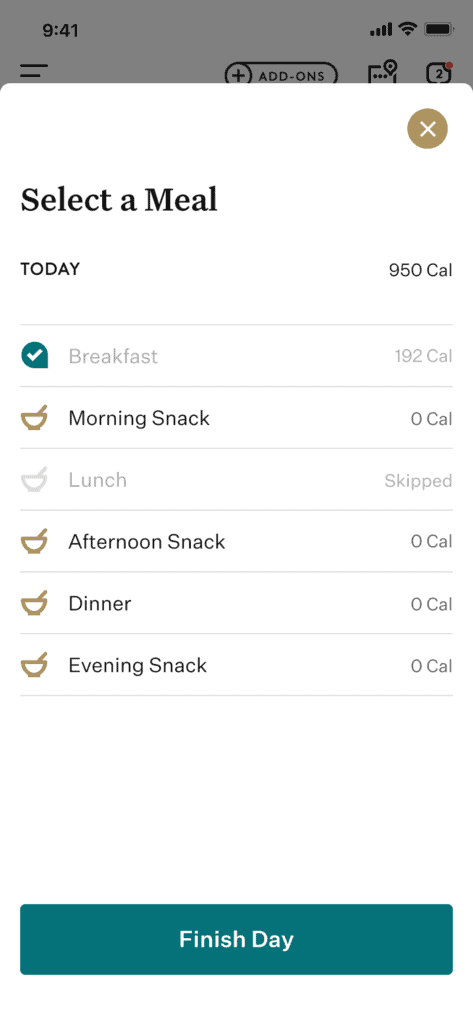
Most food trackers have a robust database of foods—and even a barcode scanner to make it easy to log prepackaged items.
A kitchen scale will also help you log your meals accurately (most of us underestimate our portion sizes when we try to “eyeball” it).
3. Eat plenty of low-caloric density foods
One way to maintain a calorie deficit is to eat plenty of foods that have a low amount of calories relative to their volume.
Low-caloric density foods—like fruits, veggies, and whole grains—are typically full of nutrients like fiber and protein.
On the other hand, high-caloric density treats like ice cream and fried samosas are often full of refined carbs and sugar—which spike your blood sugar and create more cravings.
Say you’re in the mood for something sweet. You could go for a handful of grapes (about 50 calories) or a candy bar (about 200 calories). The candy bar has more calories, but the grapes will likely leave you feeling fuller because of their higher water and fiber content.
That’s not to say you shouldn’t ever eat your favorite treats—like ice cream.
On the contrary, it’s important to treat yourself now and then—especially since restrictive dieting can lead people to overeat or give up on their weight loss goals.
Fill up on nutrient-rich, low-caloric density foods, so you can indulge in an occasional cup of rainbow sherbet and still maintain a calorie deficit.
At Noom Weight, we designate these low-caloric density items as “green foods” in our green-yellow-orange color system.
Orange foods, on the other hand, are things like candy bars and sugary beverages—treats to enjoy in smaller portions. (No food is off limits though.)
Yellow foods should make up the highest percentage of your diet—things like lean meats and healthy fats.
This system makes it easy to choose more healthy foods that create a feeling of fullness while you lose weight.
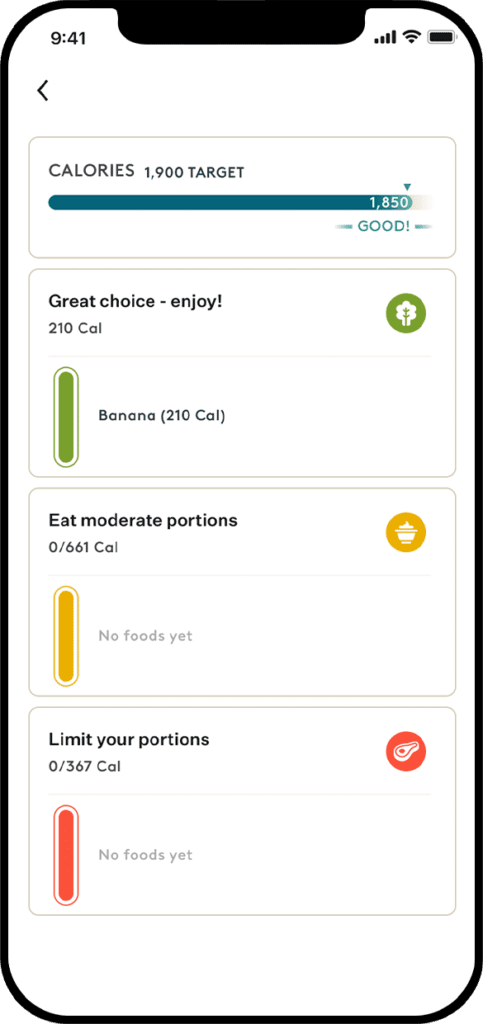
4. Address emotional eating and other unhealthy habits
Do you tend to make healthy eating choices throughout the day but overindulge in dessert after dinner? Do you find yourself mindlessly munching on potato chips when you’re stressed?
You’re not alone.
We often turn to food for comfort—which can sometimes lead to consuming too many calories. If you’re not exercising, this emotional eating may lead to weight gain.
That’s why brief, daily, psychology-based lessons are the centerpiece of Noom Weight.
In just 5 to 15 minutes per day, you’ll learn how to identify your unique eating triggers and change your habits in sustainable, simple ways that can lead to long-term weight loss.
Say you always grab a bag of chips in the afternoon when you’re bored at work. Noom’s lessons will help you find a healthier coping strategy—like walking or listening to music—to help you stay on track with your weight loss.
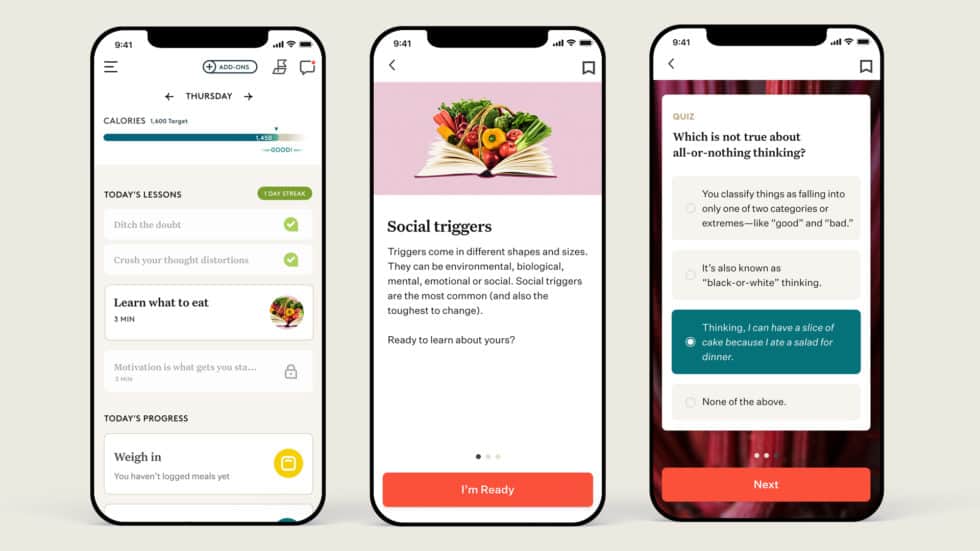
You’ll also learn to recognize unhelpful emotions and thought distortions (like “I’ll never lose this weight”) that can derail your progress and even push you to give up on your goals.
“Although weight loss is ultimately calories in versus calories out,” said Choplin, “it’s not an easy process. There is so much tied into why we choose the foods we do … weight loss is a challenging journey with so many nuances that are individual.”
Rx weight loss, the right way, with Noom
Get access to prescription weight loss medication with Noom.Noom helps you lose weight without working out
At Noom, we understand that weight loss happens when you change your eating habits. That’s why we focus on tracking your meals, eating filling and nutritious foods, and establishing positive habits that you can sustain long term.
We also recognize the benefits of exercise to your physical and mental health—even if it isn’t required for weight loss. If you’re interested, Noom coaches can help you find a physical activity you enjoy and build it into your routine at a pace that works for you.
People who never thought they’d be active say Noom got them moving. They may have started with 200 steps a day but are now walking two to three miles per day, six days a week.
Along the way, your 1:1 Noom coach (plus a whole community of Noomers just like you!) will be there to help you push past plateaus and stay motivated so you can reach your weight loss goals.
Are you ready to make lasting change? Start your Noom trial today.
Why you can trust us
At Noom, we’re committed to providing health information that’s grounded in reliable science and expert review. Our content is created with the support of qualified professionals and based on well-established research from trusted medical and scientific organizations. Learn more about the experts behind our content on our Health Expert Team page.



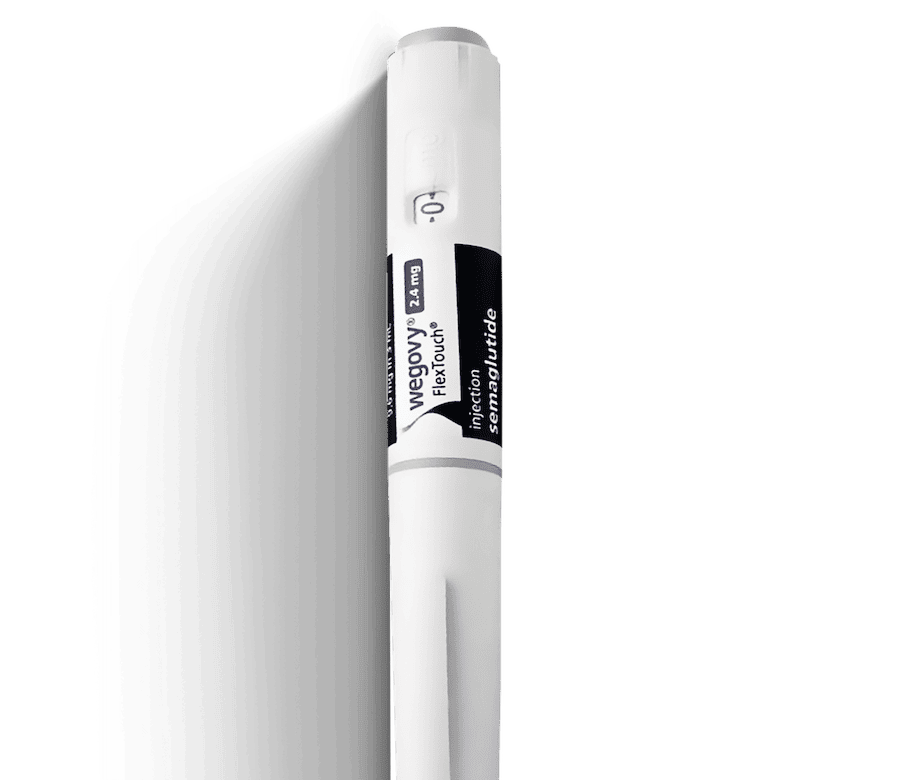



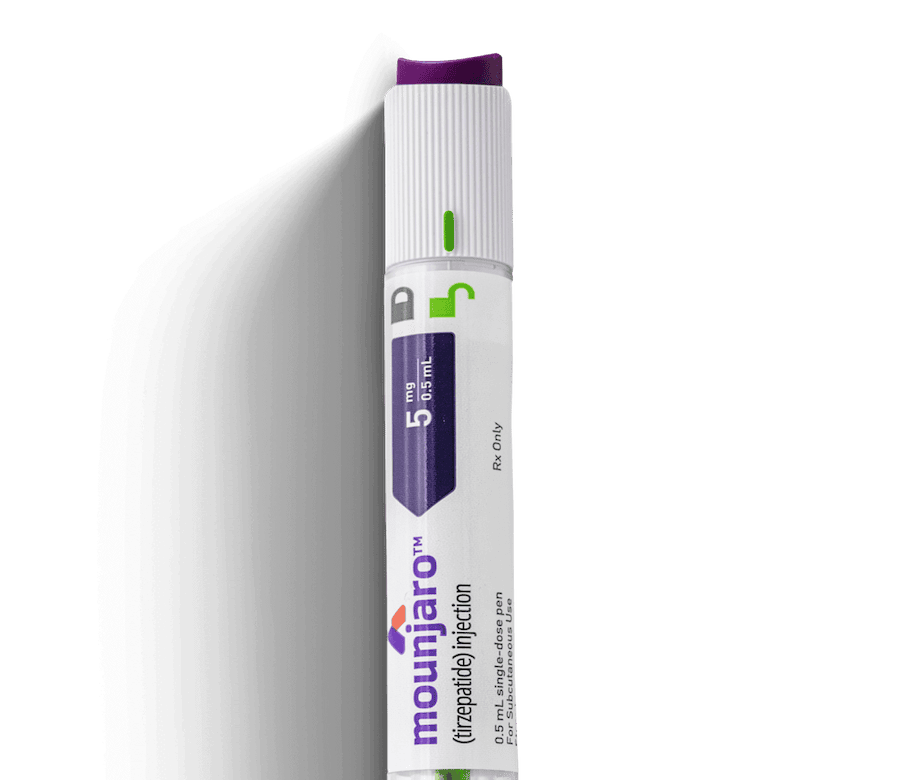
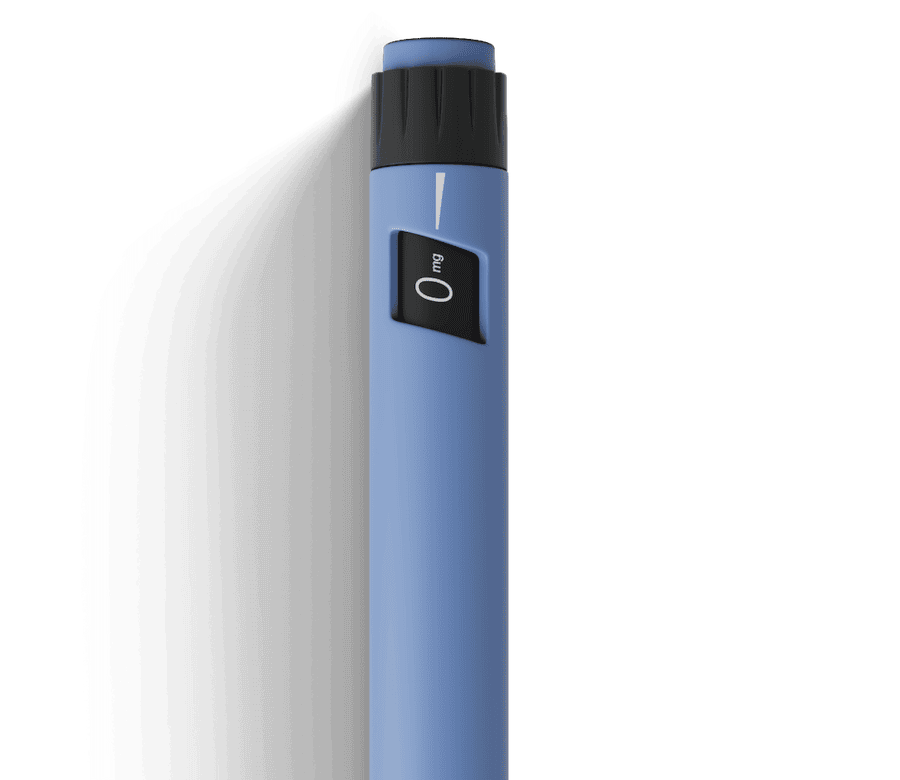

 Meaghan Cameron
Meaghan Cameron
 Noom Team
Noom Team

 Shoshana Fishbein
Shoshana Fishbein
 Melissa Kay
Melissa Kay
